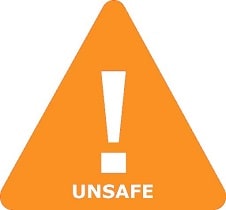Is NSC 3069 Safe in Breastfeeding
Question
I am a breastfeeding mother and i want to know if it is safe to use NSC 3069? Is NSC 3069 safe for nursing mother and child? Does NSC 3069 extracts into breast milk? Does NSC 3069 has any long term or short term side effects on infants? Can NSC 3069 influence milk supply or can NSC 3069 decrease milk supply in lactating mothers?
NSC 3069 lactation summary

- DrLact safety Score for NSC 3069 is 5 out of 8 which is considered Unsafe as per our analyses.
- A safety Score of 5 indicates that usage of NSC 3069 may cause serious side effects in breastfed baby.
- Our study of different scientific research indicates that NSC 3069 may cause moderate to high side effects or may affect milk supply in lactating mother.
- Our suggestion is to use safer alternate options rather than using NSC 3069 .
- It is recommended to evaluate the advantage of not breastfeeding while using NSC 3069 Vs not using NSC 3069 And continue breastfeeding.
- While using NSC 3069 Its must to monitor child for possible reactions. It is also important to understand that side effects vary largely based on age of breastfed child and time of medication in addition to dosage.
- Score calculated using the DrLact safety Version 1.2 model, this score ranges from 0 to 8 and measures overall safety of drug in lactation. Scores are primarily calculated using publicly available case studies, research papers, other scientific journals and publically available data.
Answer by Dr. Ru: About NSC 3069 usage in lactation
Stupor, flatulence or vomiting have been described. Theoretical risk though never reported of bone marrow toxicity. Use only if necessary. Avoid any use during neonatal period. Be aware of the possibility of false negative results of bacterial cultures when the mother is on antibiotics.
Answer by DrLact: About NSC 3069 usage in lactation
Adverse reactions such as vomiting, excessive intestinal gas and falling asleep at the breast have been reported in breastfed infants whose mothers were taking oral NSC 3069. Milk concentrations are not sufficient to induce "gray baby" syndrome, but since NSC 3069-induced aplastic anemia is not dose-related, this might occur, but has not been reported. An alternate drug is preferred to NSC 3069 during breastfeeding, especially while nursing a newborn or preterm infant. If the mother must receive NSC 3069 during nursing, monitor the infant for gastrointestinal disturbances and adequacy of nursing. Monitoring of the infant's complete blood count and differential is advisable. In some cases, discontinuation of breastfeeding might be preferred.
NSC 3069 Side Effects in Breastfeeding
One study reported 50 breastfed infants whose mothers were give oral NSC 3069 beginning 2 to 12 days postpartum in dosages of 1 (n = 20), 2 (n = 20)or 3 grams (n = 10) daily. All of the infants refused to suck, and 50 to 60% fell asleep during nursing. Vomiting occurred after feeding in 10%, 25%, and 90% of infants with daily maternal dosages of 1, 2 and 3 grams, respectively. All infants had excessive intestinal gas and abdominal distention, with severe problems in 0.5%, 20% and 100% of infants with daily maternal dosages of 1, 2 and 3 grams, respectively.[4]
Alternate Drugs
Azithromycin(Safe)
Oxytetracycline(Safe)
Tetracycline(Safe)
Telithromycin(Unsafe)
Ivermectin(Safe)
Tenofovir(Safe)
Ampicillin(Safe)
Acyclovir(Safe)
Valganciclovir(Low Risk)
Cephradine(Safe)
Cefdinir(Safe)
Gentamicin(Safe)
Lindane(Unsafe)
Quinine(Safe)
Ganciclovir(Low Risk)
Tioconazole(Safe)
Sulfamethoxazole(Safe)
Emtricitabine(Safe)
Streptomycin(Safe)
Permethrin(Safe)
Methicillin(Low Risk)
Cephalexin(Safe)
Terconazole(Safe)
Primaquine(Low Risk)
Cefazolin(Safe)
Gatifloxacin(Low Risk)
Efavirenz(Unsafe)
Cefoxitin(Safe)
Praziquantel(Safe)
Saquinavir(Unsafe)
Pyrimethamine(Safe)
Sulconazole(Safe)
Atovaquone(Low Risk)
Ofloxacin(Safe)
Sulfisoxazole(Safe)
Didanosine(Unsafe)
Salicylic Acid(Safe)
Mefloquine(Safe)
Secnidazole(Safe)
Cefuroxime(Safe)
Linezolid(Low Risk)
Cefadroxil(Safe)
Enoxacin(Low Risk)
Malathion(Low Risk)
Cefotetan(Safe)
Mebendazole(Safe)
Meropenem(Safe)
Amoxicillin(Safe)
Hydroxychloroquine(Safe)
Teicoplanin(Safe)
Polymyxin B(Safe)
Norfloxacin(Safe)
Procaine Penicillin G(Safe)
Ritonavir(Unsafe)
Chloroquine(Safe)
Oxiconazole(Safe)
Cefaclor(Safe)
Vancomycin(Safe)
Doxycycline(Low Risk)
Cefotaxime(Safe)
Colistimethate(Safe)
Loracarbef(Safe)
Fusidic Acid(Safe)
Ceftriaxone(Safe)
Naftifine(Safe)
Abacavir(Safe)
Piperacillin(Safe)
Nevirapine(Low Risk)
Amikacin(Safe)
Trovafloxacin(Unsafe)
Dapsone(Low Risk)
Neomycin(Safe)
Penciclovir(Safe)
Dicloxacillin(Safe)
Oseltamivir(Safe)
Tinidazole(Safe)
Nelfinavir(Unsafe)
Lomefloxacin(Low Risk)
Paromomycin(Safe)
Famciclovir(Low Risk)
Nitazoxanide(Safe)
Sulfasalazine(Safe)
Levofloxacin(Low Risk)
Tobramycin(Safe)
Ciclopirox(Safe)
Capreomycin(Low Risk)
Roxithromycin(Safe)
Demeclocycline(Low Risk)
Chloramphenicol(Unsafe)
Rifaximin(Safe)
Cefixime(Safe)
Ceftibuten(Safe)
Butoconazole(Safe)
Nafcillin(Safe)
Erythromycin(Low Risk)
Penicillin V(Safe)
Kanamycin(Safe)
Lamivudine(Safe)
Ticarcillin(Safe)
Bacampicillin(Safe)
Cloxacillin(Safe)
Cefepime(Safe)
Metronidazole(Safe)
Indinavir(Unsafe)
Floxacillin(Safe)
Ceftazidime(Safe)
Albendazole(Safe)
Ertapenem(Safe)
Clindamycin(Low Risk)
Penicillin G(Safe)
Amantadine(Low Risk)
Zidovudine(Low Risk)
Moxifloxacin(Low Risk)
Aztreonam(Safe)
Clarithromycin(Safe)
Ciprofloxacin(Safe)
Econazole(Safe)
Cefprozil(Safe)
Ampicillin(Safe)
Cephradine(Safe)
Cefdinir(Safe)
Gentamicin(Safe)
Sulfamethoxazole(Safe)
Streptomycin(Safe)
Methicillin(Low Risk)
Cephalexin(Safe)
Cefazolin(Safe)
Gatifloxacin(Low Risk)
Cefoxitin(Safe)
Ofloxacin(Safe)
Sulfisoxazole(Safe)
Methenamine(Unsafe)
Cefuroxime(Safe)
Cefadroxil(Safe)
Enoxacin(Low Risk)
Cefotetan(Safe)
Methenamine Mandelate(Unsafe)
Amoxicillin(Safe)
Polymyxin B(Safe)
Norfloxacin(Safe)
Trimethoprim(Safe)
Procaine Penicillin G(Safe)
Ceftriaxone(Safe)
Cefaclor(Safe)
Vancomycin(Safe)
Doxycycline(Low Risk)
Cefotaxime(Safe)
Fosfomycin(Safe)
Loracarbef(Safe)
Teicoplanin(Safe)
Nitrofurantoin(Safe)
Piperacillin(Safe)
Colistimethate(Safe)
Trovafloxacin(Unsafe)
Neomycin(Safe)
Dicloxacillin(Safe)
Tinidazole(Safe)
Lomefloxacin(Low Risk)
Fusidic Acid(Safe)
Amikacin(Safe)
Tobramycin(Safe)
Mupirocin(Safe)
Capreomycin(Low Risk)
Nalidixic Acid(Low Risk)
Demeclocycline(Low Risk)
Chloramphenicol(Unsafe)
Cefixime(Safe)
Levofloxacin(Low Risk)
Ceftibuten(Safe)
Nafcillin(Safe)
Erythromycin(Low Risk)
Penicillin V(Safe)
Sulfasalazine(Safe)
Kanamycin(Safe)
Ticarcillin(Safe)
Ertapenem(Safe)
Bacampicillin(Safe)
Cloxacillin(Safe)
Iodine(Unsafe)
Cefepime(Safe)
Metronidazole(Safe)
Floxacillin(Safe)
Ceftazidime(Safe)
Moxifloxacin(Low Risk)
Clindamycin(Low Risk)
Penicillin G(Safe)
Aztreonam(Safe)
Ciprofloxacin(Safe)
Cefprozil(Safe)
Oxytetracycline(Safe)
Tetracycline(Safe)
Chlorhexidine(Safe)
